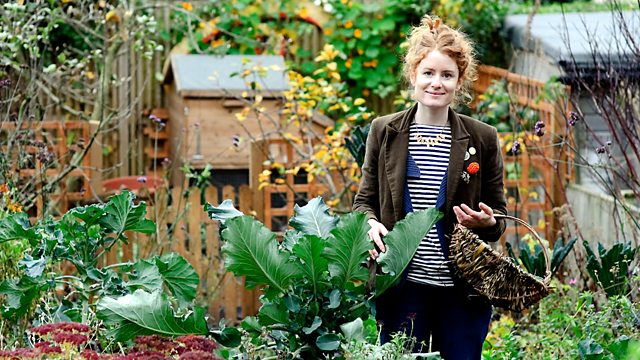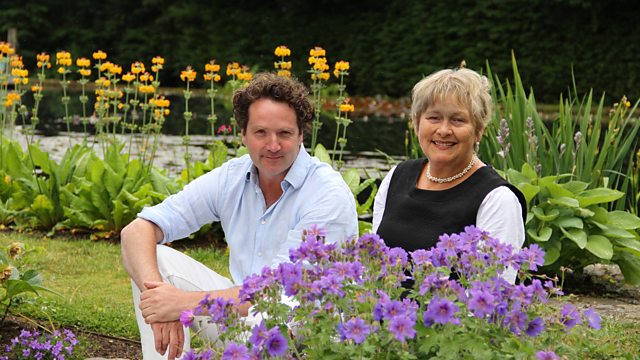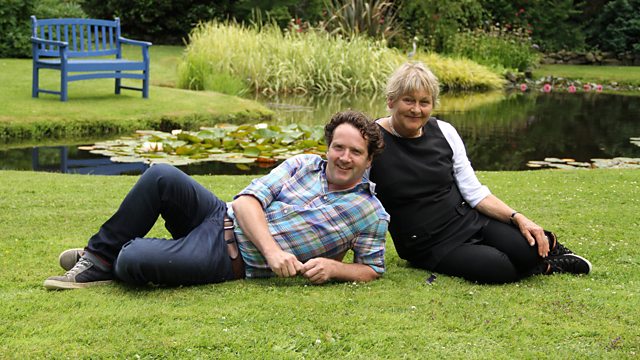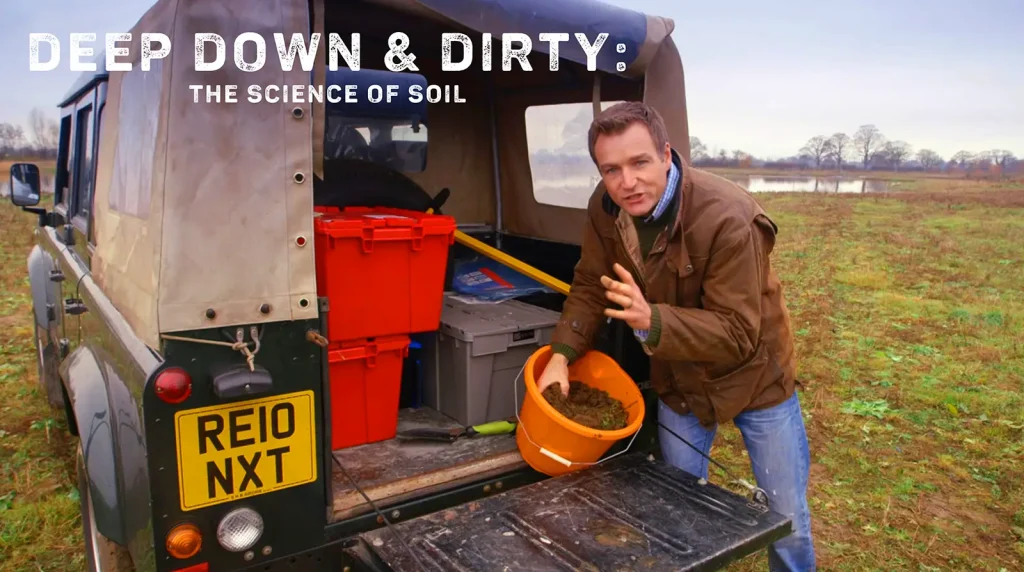The Edible Garden episode 1 – Peas and Beans: Alys Fowler attempts to avoid shop-bought fruit and vegetables and live off her own home-grown produce. It’s no easy task because Alys doesn’t want to turn her garden into an allotment, so she’s growing her fruit and vegetables among her flowers.
Alys will focus on different foods and show how anyone can grow, cook and eat from their own garden – even if they live in a city.
Peas and beans are prolific vegetables but they also look beautiful in the borders. Alys makes delicious broad bean falafels and pea shoot cocktails, and forages for willow to make plant supports. And she has two new additions to the family – her chickens!
The Edible Garden episode 1 – Peas and Beans
Broad beans
Broad beans are easy to grow and utterly delicious, heralding the end of the hungry gap between late autumn and the beginning of bountiful summer harvests. In sheltered, southern gardens with well-drained soils, broad beans can be sown directly into the soil in early November or February for harvests as early as May. Sown in November, seeds will germinate within two to four weeks and young plants should overwinter and recommence growth as soon as conditions are favourable in spring. In cold areas, or when winters are severe, plants will need fleece or cloche protection.
Elsewhere, sow beans in pots under cover in February for planting out in spring or direct into the ground in March, April and even early May, for harvests throughout the summer. Pot-raised plants are especially useful where soils are wet or rich in clay (as these soils can lead to seeds rotting in the ground).
Broad bean rust
Broad bean rust is one of the most common fungal diseases of broad bean leaves. The fungus causes small, dusty, dark brown spots surrounded by a pale yellow halo on leaves and stems. Broad bean rust is caused by the fungus Uromyces viciae-fabae. It is not as damaging as another common broad bean disease, chocolate spot, but severe attacks can cause defoliation. Expect to see significant levels of this rust from mid-summer.
It attacks broad beans, peas and other related legumes and has several races, but in the UK is only important on broad beans. Runner and French beans are affected by a more serious, but unrelated rust disease.
Peas
There’s nothing like the flavour of freshly picked peas. Use them as quickly as possible once picked as they lose their sweetness. Dwarf varieties of peas don’t need much in the way of support. The easiest types to grow are mangetout and sugar snap varieties.
For best results peas need an open, sunny position with good drainage. Never sow in cold, wet soil; acidic soils should be limed. If spring is slow to arrive, warm the soil with polythene before sowing and then protect seedlings with horticultural fleece. Generally, peas prefer cooler weather and grow well in cool springs.
Make a flat-bottomed trench 5cm (2in) deep and 15cm (6in) wide – a draw hoe is ideal for this. Sow the seeds evenly in the trench approximately 7.5cm (3in) apart, cover with soil, then lightly firm. If you need a second row make this the height of the crop away from the first trench.
Make a single sowing of an early, second early and maincrop variety. First earlies are sown from March to early June and will be ready to pick in 11 to 13 weeks. Second earlies are sown from March to June and are ready in around 14 weeks. Maincrop cultivars are sown at the same time and take up to 16 weeks.




